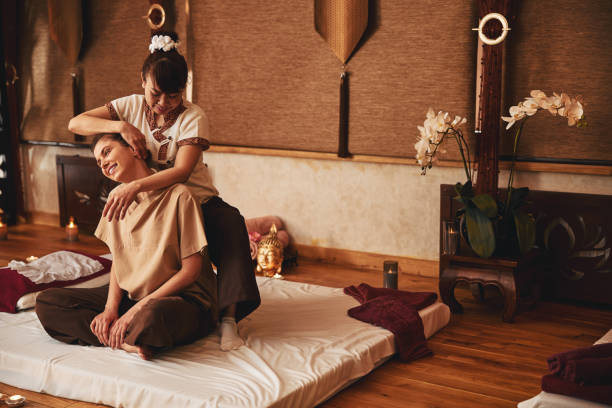- Sukhumvit Alley22, Khlong Ten, Khlong Toie, Bangkok 10110
- +66 902 346 729
- info@massageinbangkok.com


Nuad Bo Rarn, another name for traditional Thai massage, has a rich cultural background in Thailand. It is about 2,500 years old, and it may have arrived with Buddhism in the sixth century BC. Thai and Buddhist traditions regard Jivaka Komaraphaj, a highly esteemed physician, as the “father” of Thai massage. He was the Magadha King’s royal physician and lived during the period of the Buddha. Thai massage is believed to have originated from his knowledge of fusing Thai techniques with Indian Ayurvedic concepts.
A large portion of the early history of Thai massage was destroyed in the 1767 Burmese invasion on Ayutthaya. Some of it does survive, though, as seen by the inscriptions on the walls of Wat Pho, the Bangkok-based Temple of the Reclining Buddha, which depict various massage poses and methods and emphasise the relationship between Thai massage and Buddhist philosophy.Thai massage was traditionally performed at temples by monks. They practiced healing, emphasising both bodily and spiritual health. This technique focused on a holistic approach to health, balancing the body’s energy via bodily manipulation, acupressure, and assisted stretches.
With the opening of the first Thai massage school outside of temples in the 19th century, Thai massage became more widely available. Thai massage is now widely used for overall wellbeing, increased flexibility, and relaxation. Receiving a traditional Thai massage allows you to connect with an old, time-honored practice while also benefiting from its therapeutic advantages.
Thai massage is performed completely dressed, in contrast to other treatments where you undress and use oil. Put on loose, comfortable clothes that won’t restrict your movement, such as a loose t-shirt and yoga trousers. There are locations where you can get clothes to change into.
Although deep pressure and stretches used in Thai massage may produce some initial discomfort, the experience shouldn’t be severe. It’s crucial to communicate! Tell your therapist how comfortable you are so they can modify the pressure.
However, Thai massage is generally safe; you should first see your doctor if you have any medical issues, such as high blood pressure, pregnancy, or recent injuries.
